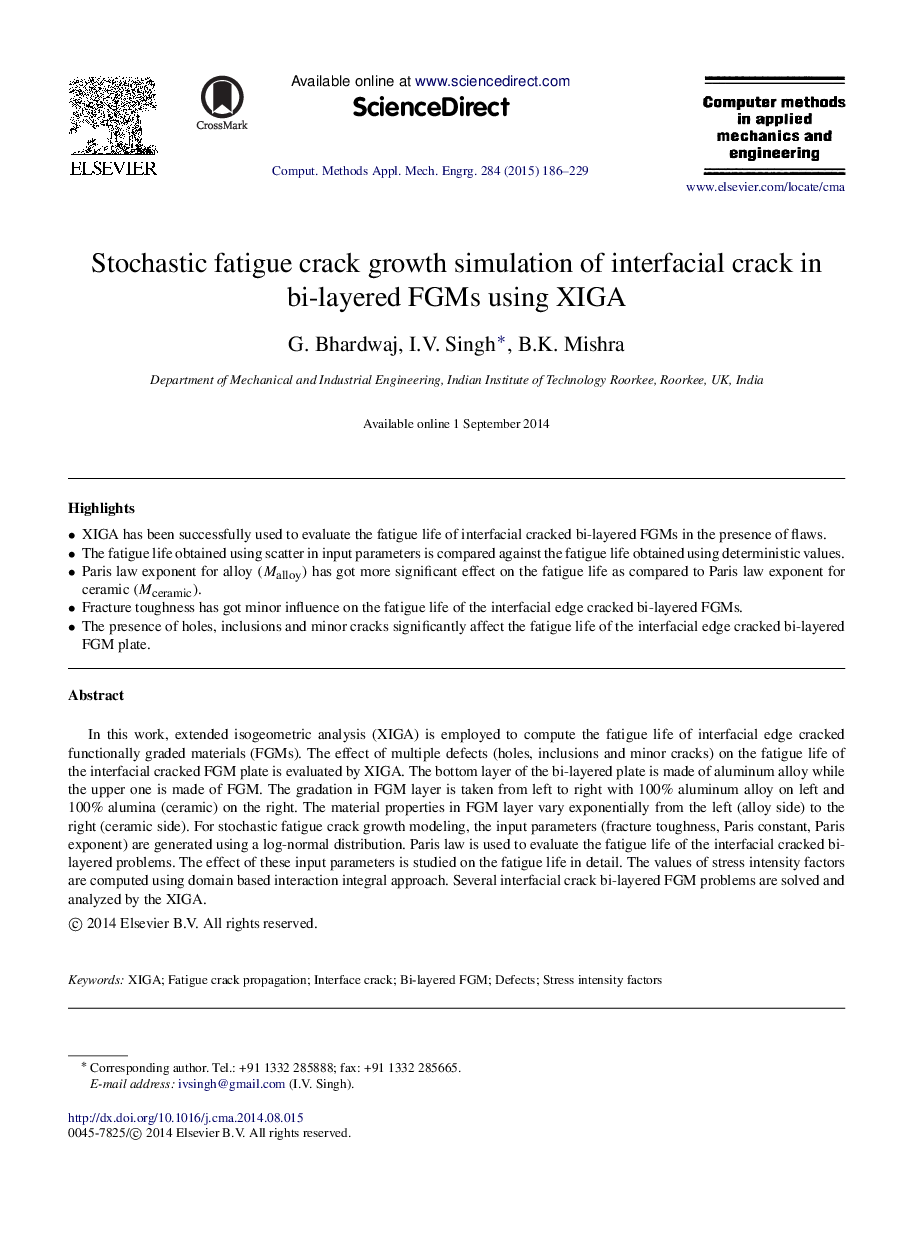| Article ID | Journal | Published Year | Pages | File Type |
|---|---|---|---|---|
| 497784 | Computer Methods in Applied Mechanics and Engineering | 2015 | 44 Pages |
•XIGA has been successfully used to evaluate the fatigue life of interfacial cracked bi-layered FGMs in the presence of flaws.•The fatigue life obtained using scatter in input parameters is compared against the fatigue life obtained using deterministic values.•Paris law exponent for alloy (Malloy) has got more significant effect on the fatigue life as compared to Paris law exponent for ceramic (Mceramic).•Fracture toughness has got minor influence on the fatigue life of the interfacial edge cracked bi-layered FGMs.•The presence of holes, inclusions and minor cracks significantly affect the fatigue life of the interfacial edge cracked bi-layered FGM plate.
In this work, extended isogeometric analysis (XIGA) is employed to compute the fatigue life of interfacial edge cracked functionally graded materials (FGMs). The effect of multiple defects (holes, inclusions and minor cracks) on the fatigue life of the interfacial cracked FGM plate is evaluated by XIGA. The bottom layer of the bi-layered plate is made of aluminum alloy while the upper one is made of FGM. The gradation in FGM layer is taken from left to right with 100% aluminum alloy on left and 100% alumina (ceramic) on the right. The material properties in FGM layer vary exponentially from the left (alloy side) to the right (ceramic side). For stochastic fatigue crack growth modeling, the input parameters (fracture toughness, Paris constant, Paris exponent) are generated using a log-normal distribution. Paris law is used to evaluate the fatigue life of the interfacial cracked bi-layered problems. The effect of these input parameters is studied on the fatigue life in detail. The values of stress intensity factors are computed using domain based interaction integral approach. Several interfacial crack bi-layered FGM problems are solved and analyzed by the XIGA.
